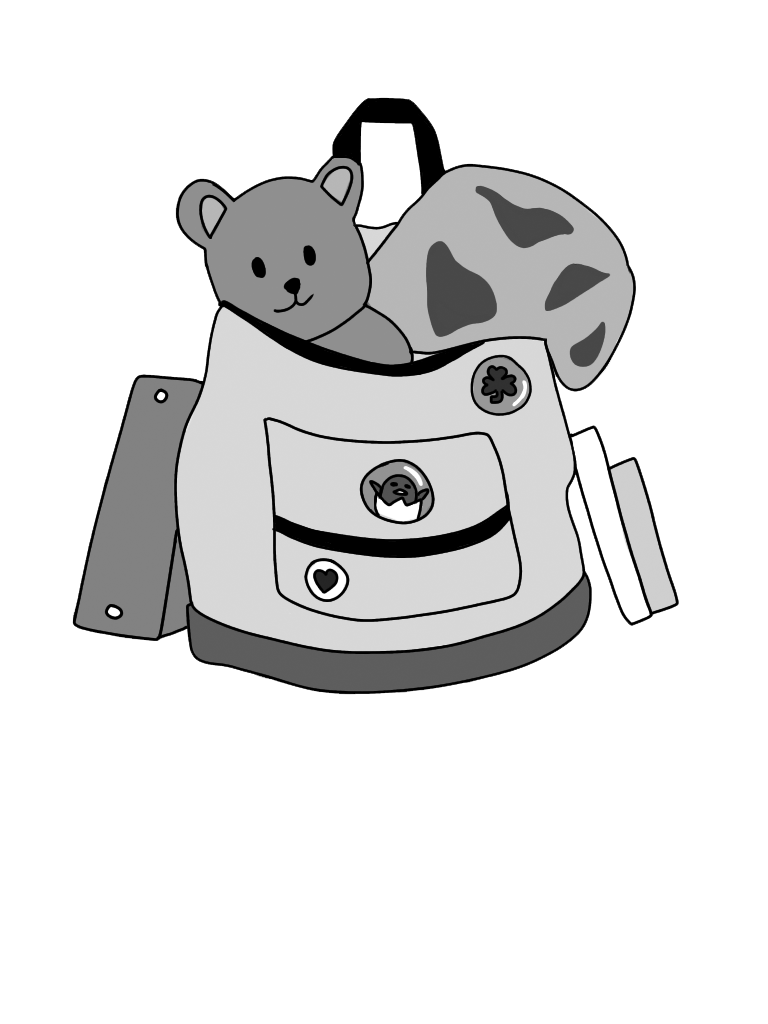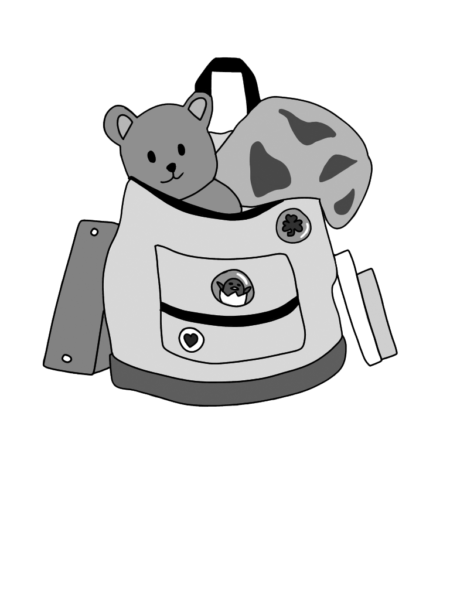
Most high school students today don’t have time to think about trinkets. Online photos and group chats have replaced the sentimentality of letters, photos and charms. After all, why have clutter when everything can be kept nice and neat on a phone?
Yet, despite the practicality of keeping memories online, many Aragon students feel that the benefits of having a tangible, physical charm are great.
“It’s a quieter way to fiddle with something on your wrist, instead of twiddling your thumbs or other nervous habits” said freshman Devin McNamara.

McNamara’s charm is a bracelet made of purple and blue meditation beads, which they received last year from their mother. Not only does it help them with their anxiety, it reminds them of their grandmother, who also wore meditation beads.
During childhood, many children have “comfort objects,” including teddy bears, blankets and dolls. Once children hit adolescence, however, these objects are usually considered taboo and embarrassing. However, according to a survey by Best Mattress Brand, seven percent of adults still sleep with a stuffed animal to reduce anxiety and stress. Many others trade out their dolls and teddy bears for little charms, or meditation beads like McNamara’s.
“It’s supposed to help me with my anxiety…and I have a lot of anxiety, so it [helps me] cope with it,”McNamara said. “It just makes me feel more comfortable having it.”
Other benefits Aragon students find in having a charm include increased self-confidence and keeping memories close. Freshman Victoria Ly said her charm, a Gudetama (Japanese cartoon), provided a talking point and helped her meet new people.
“It makes more people talk to me because it’s interesting and I get to socialize more,” said Ly.
Many Aragon students also feel charms carry great sentimental value and emotion. Ly said her pin reminds her of her childhood.
“When I didn’t have it, my test grades just went low…I feel like it gives me luck“
Freshman Parker Guuban’s charm doesn’t help him nd new friends, but he does believe it brings him good luck.
“Every time I have it, good things happen,” Guuban said. “When I didn’t have it, my test grades just went low…I feel like it gives me luck.”
Good luck charms, though o en rejected as foolish and silly, may help increase self-confidence. In 2010, German psychologists conducted a study involving university students; those who played golf with what they were told was a “lucky ball“ performed 35 percent better than those who were not.
This experiment was led by Lysann Damisch of the University of Koln, Germany, who believes the idea of good luck increases one’s confidence in their own ability. This then increases one’s expectations and persistence, overall improving performance.
While good luck charms, meditation beads and cute pins all may have a powerful effect on one’s mental wellbeing and confidence, they won’t do all the work.
“Sometimes you’ve just got to take a really deep breath,” McNamara said. “You can’t always rely on [the charm] to help.”
Be it a comfort object, a good luck charm, or just a little something to carry around, charms may not seem like much, but they might just be making life a little better.



